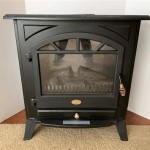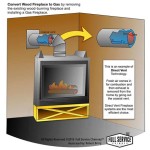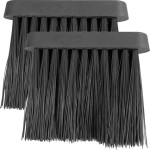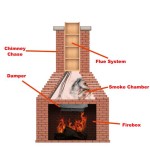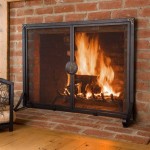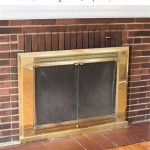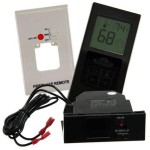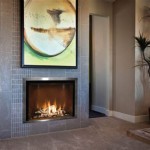Double Sided Indoor Outdoor Gas Fireplaces: A Comprehensive Guide
Double sided indoor outdoor gas fireplaces, also known as see-through or peninsula fireplaces, represent a sophisticated and versatile heating solution. These fireplaces offer a unique aesthetic appeal by creating a visual connection between two separate spaces, be it an indoor living room and an outdoor patio or two distinct indoor areas. Beyond their aesthetic value, they provide functional heating to both spaces, enhancing the ambiance and comfort of the home. This article will delve into the various aspects of double sided indoor outdoor gas fireplaces, including their design considerations, installation requirements, safety features, maintenance procedures, and cost considerations.
Design Considerations and Styles
The design of a double sided indoor outdoor gas fireplace must carefully consider the architectural style of both the indoor and outdoor spaces it will connect. The fireplace needs to seamlessly integrate into the existing decor while also creating a focal point. The choice of materials, such as stone, brick, tile, or metal, should complement the surrounding aesthetics. Furthermore, the size and shape of the fireplace, whether rectangular, square, or custom designed, must be proportionate to the scale of the rooms it will serve.
Several stylistic options are available for double sided fireplaces. Modern designs often feature clean lines, minimalist aesthetics, and materials like stainless steel or glass. Traditional designs incorporate more ornate details, such as intricate stonework or classic brick patterns. Rustic designs might employ natural stone or reclaimed wood to create a warm and inviting atmosphere. Ultimately, the design should reflect the homeowner's personal preferences and the overall style of the home.
Ventilation options also play a crucial role in the design process. Direct vent fireplaces are the most common choice for indoor outdoor applications, as they draw combustion air from outside and vent exhaust gases directly to the exterior, minimizing the risk of carbon monoxide buildup indoors. Vent-free models, while offering greater installation flexibility, are typically not recommended for enclosed indoor spaces due to ventilation concerns. The specific ventilation requirements will influence the placement and design of the fireplace.
The choice of fire media, such as ceramic logs, glass beads, or decorative stones, also impacts the overall aesthetic. Ceramic logs provide a traditional appearance, mimicking the look of a wood-burning fireplace. Glass beads offer a more contemporary feel, reflecting light and creating a visually striking display. Decorative stones can add texture and color to the fireplace, complementing the surrounding decor. The selection of fire media should align with the desired style and ambiance.
Finally, the placement of the fireplace is a critical design consideration. Strategically positioning the fireplace can maximize its visual impact and heating efficiency. Factors such as prevailing wind direction, sun exposure, and traffic flow should be taken into account. The fireplace should also be positioned in a location that allows for safe and easy access for maintenance and cleaning.
Installation and Safety Requirements
The installation of a double sided indoor outdoor gas fireplace is a complex process that requires professional expertise. Improper installation can lead to safety hazards, such as gas leaks or carbon monoxide poisoning. Therefore, it is essential to hire a qualified and licensed gas fireplace installer who is familiar with local building codes and regulations.
Before installation begins, it is necessary to obtain all required permits from the local building department. These permits ensure that the installation complies with safety standards and regulations. The installer will typically conduct a site inspection to assess the feasibility of the installation and identify any potential challenges.
Gas line installation is a critical aspect of the installation process. The gas line must be properly sized and connected to the fireplace to ensure adequate gas flow and prevent leaks. The installer will typically use a gas leak detector to verify the integrity of the gas line. It is crucial to use approved gas piping materials and fittings to prevent corrosion and ensure long-term reliability.
Ventilation is another critical safety consideration. Direct vent fireplaces must be properly vented to the exterior to prevent the buildup of exhaust gases indoors. The venting system must be installed according to the manufacturer's instructions and local building codes. The vent termination point should be located away from windows, doors, and other air intakes to prevent exhaust gases from entering the building.
Clearance to combustibles is another important safety requirement. The fireplace must be installed with adequate clearance from combustible materials, such as wood framing, furniture, and curtains. The manufacturer's instructions will specify the minimum clearance requirements. Failure to maintain adequate clearance can lead to a fire hazard.
Safety features such as flame failure devices and carbon monoxide detectors are essential for mitigating potential risks. Flame failure devices automatically shut off the gas supply if the pilot light goes out, preventing the release of unburned gas. Carbon monoxide detectors provide an early warning of carbon monoxide buildup in the home, allowing occupants to evacuate safely. Regular inspection and testing of these safety features are crucial for ensuring their proper functioning.
The installation of electrical components, such as ignition systems and remote controls, must also be performed by a qualified electrician. Electrical wiring must comply with local electrical codes and regulations. Proper grounding is essential to prevent electrical shock hazards.
Maintenance and Cost Considerations
Regular maintenance is essential for ensuring the safe and efficient operation of a double sided indoor outdoor gas fireplace. Maintenance procedures typically include cleaning the glass, inspecting the burner assembly, and checking the venting system. The frequency of maintenance will depend on the usage of the fireplace and the manufacturer's recommendations.
Cleaning the glass is a relatively simple task that can be performed by the homeowner. Use a non-abrasive glass cleaner and a soft cloth to remove soot and buildup from the glass. Avoid using harsh chemicals or abrasive cleaners, as they can damage the glass.
Inspecting the burner assembly is a more complex task that may require professional assistance. The burner assembly should be inspected for signs of corrosion, damage, or blockage. Clean the burner ports with a wire brush or compressed air to ensure proper gas flow. Replace any damaged or worn components.
Checking the venting system is also crucial for ensuring safe operation. Inspect the vent pipes for signs of damage, such as cracks or leaks. Ensure that the vent termination point is clear of obstructions, such as snow or debris. If you notice any signs of damage or obstruction, contact a qualified technician for repair.
The cost of a double sided indoor outdoor gas fireplace can vary widely depending on factors such as size, style, features, and installation complexity. The initial purchase price of the fireplace typically ranges from several thousand dollars to tens of thousands of dollars. Installation costs can also be significant, depending on the complexity of the installation and the labor rates in your area.
In addition to the initial costs, there are also ongoing operating costs to consider. Gas costs will vary depending on the usage of the fireplace and the price of natural gas or propane in your area. Regular maintenance costs can also add up over time. It is important to factor in these costs when budgeting for a double sided indoor outdoor gas fireplace.
Energy efficiency is another important cost consideration. Look for fireplaces with high energy efficiency ratings to minimize gas consumption. Features such as programmable thermostats and remote controls can also help to conserve energy. Consider the long-term energy savings when comparing different fireplace models.
The value added to the home by installing a double sided indoor outdoor fireplace should also be considered. These fireplaces can significantly enhance the aesthetic appeal and functionality of a home, potentially increasing its resale value. The investment in a high-quality fireplace can provide years of enjoyment and enhance the overall living experience.
In conclusion, double sided indoor outdoor gas fireplaces offer a unique blend of aesthetic appeal and functional heating. Careful consideration of design, installation, safety, maintenance, and cost is essential for ensuring a successful and enjoyable fireplace experience. Hiring qualified professionals for installation and maintenance is crucial for ensuring safety and long-term reliability. By carefully planning and executing the installation, homeowners can create a stunning centerpiece that enhances the beauty and comfort of their home.

Double Sided Indoor Outdoor Fireplace Heat Glo

White Mountain Hearth Dvct40csp Out Rushmore Clean Face Direct Vent Double Sided Indoor Outdoor Fireplace With

Double Sided Indoor Outdoor Fireplace Heat Glo

23 Luxurious Double Sided Fireplaces Fireplace Photos

Indoor And Out No Limitations With Davinci Lopi

Benefits Of Installing An Indoor Outdoor Fireplace Wyckoff

Twilight Modern Gas Fireplace By Outdoor Lifestyles Best Fire

Stellar Transcend Indoor Outdoor Double Sided Gas Fireplace Fireside Hearth Home

Make Double The Impact With A Sided Fire

Ideas For New House Indoor Outdoor Fireplaces Gas Fireplace Designs
Related Posts

